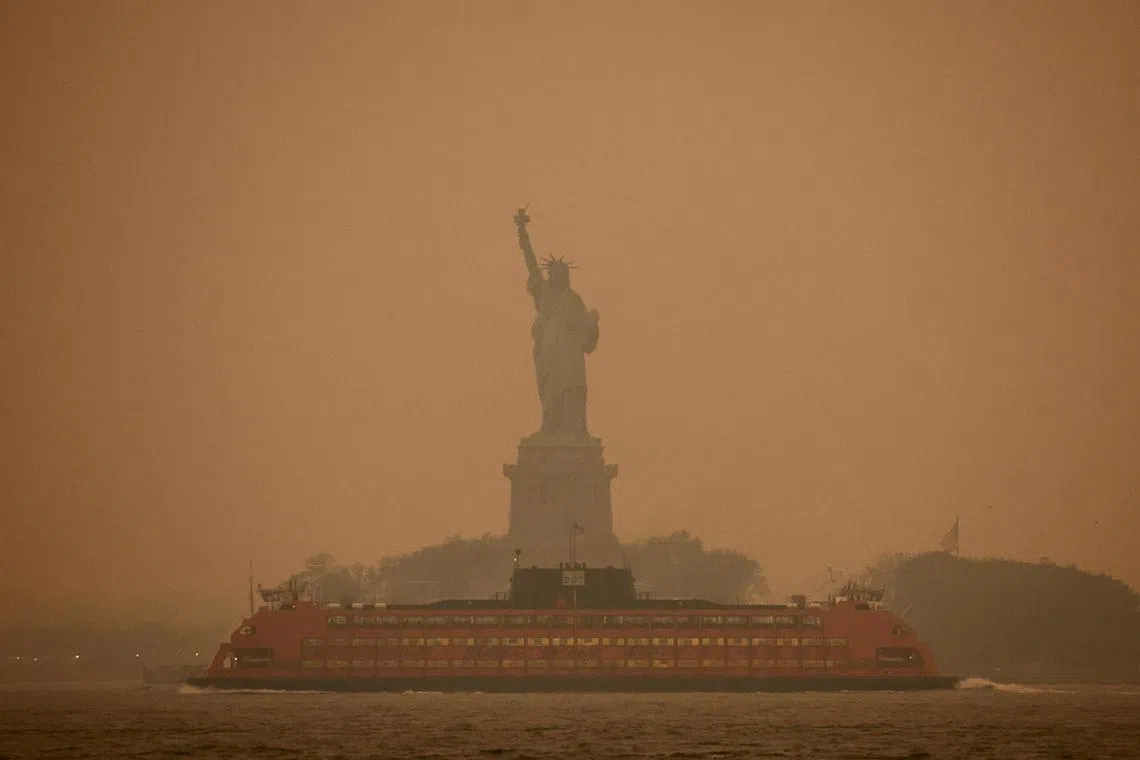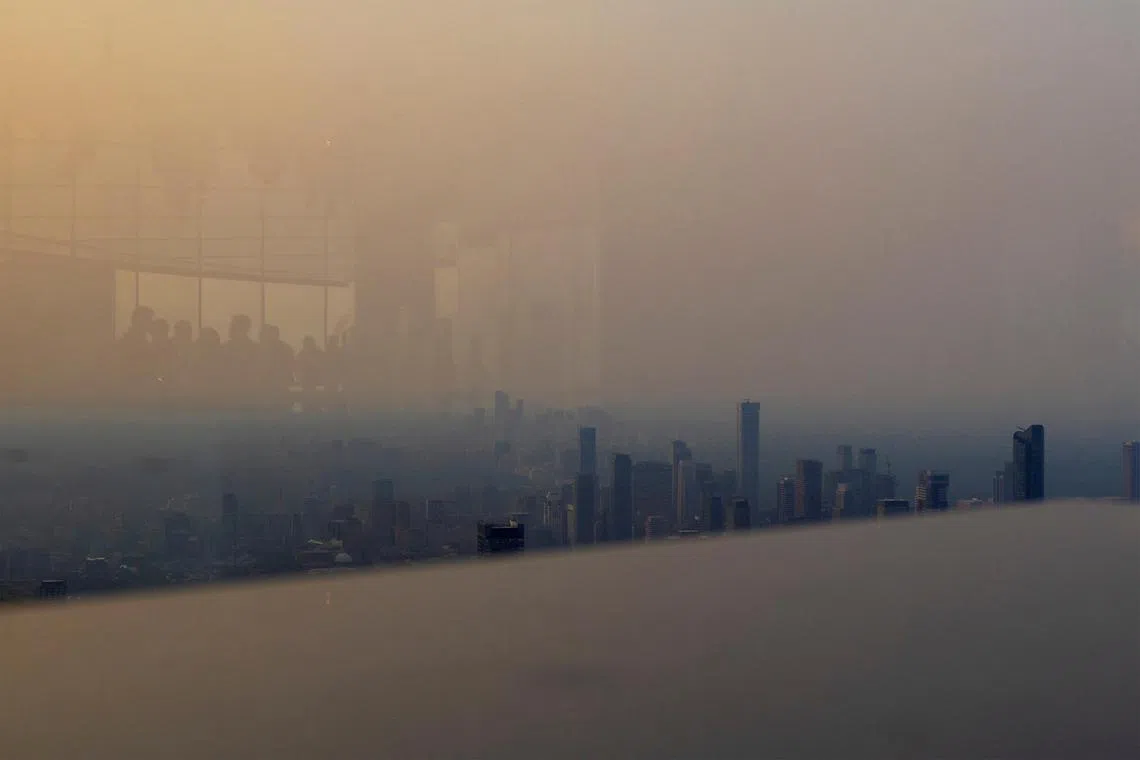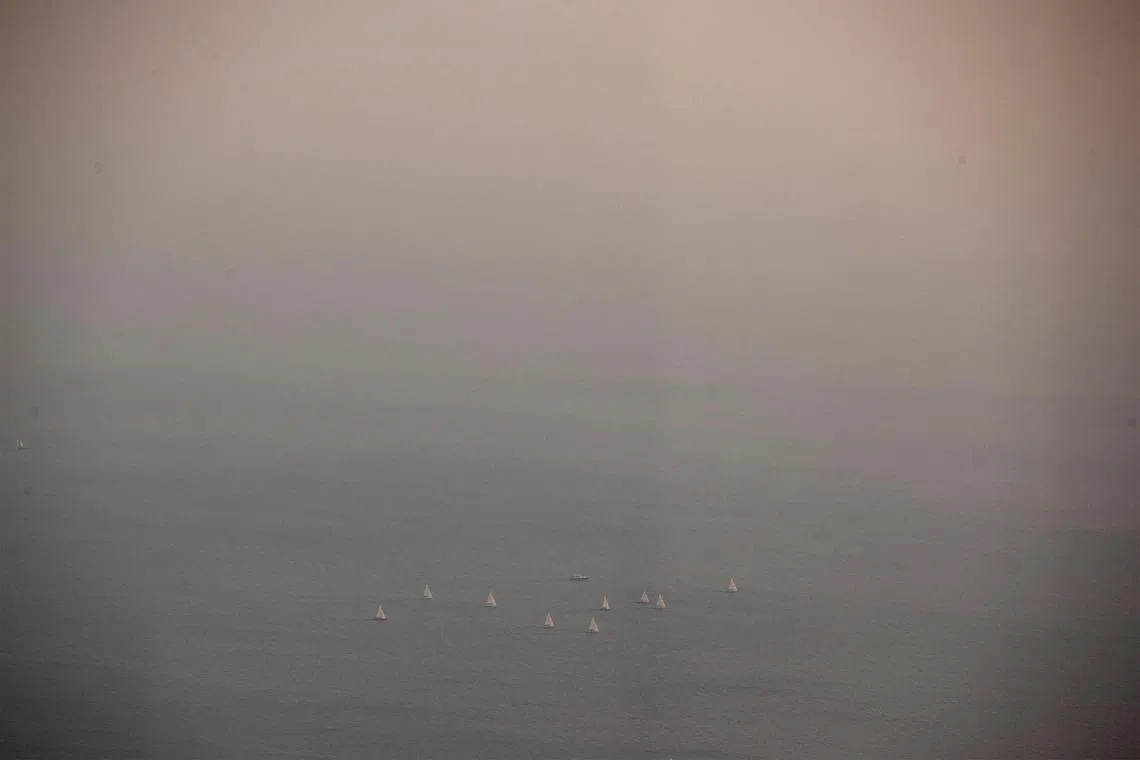New York has world’s worst air pollution as Canada wildfires rage
Sign up now: Get ST's newsletters delivered to your inbox

The Statue of Liberty in New York City covered in haze and smoke caused by wildfires in Canada, on June 6, 2023.
PHOTO: REUTERS
Follow topic:
NEW YORK - A smoky haze floated over a wide swathe of the northern United States on Tuesday from Canada, where hundreds of wildfires were blazing, triggering air quality alerts from Minnesota to Massachusetts.
In Ontario, a layer of haze blanketed parts of Ottawa and Toronto, where Canadian officials warned residents about the poor air quality as smoke floated over New York state and Vermont.
New York City was the most polluted major city in the world on Tuesday night, according to IQAir, a technology company that tracks air quality and pollution around the world.
Pollution levels in the city were deemed to be in the “unhealthy” range, and were higher than those in the Indian capital Delhi and Iraq’s Baghdad at 1.25am New York time, according to the Swiss air quality company.
Canada is on track for its worst wildfire season if the rate of burning continues at the same pace.
Government officials say about 3.3 million hectares have so far been scorched. Some 413 fires are currently burning and 26,000 Canadians have been forced to evacuate their homes.
In eastern Canada, Quebec was most affected by wildfires as at early Tuesday afternoon, with more than 150 active blazes across the area, according to the fire agency.
Residents in some areas were being encouraged to shut their windows and doors, officials in Quebec said.
Videos and images showed some fires blazing for kilometres, sending dark smoke plumes billowing into the sky.
At a news conference on Monday, Canadian Prime Minister Justin Trudeau said he was in contact with local officials across Canada about the fires.
“This is a scary time for a lot of people,” he said.
Mr Bill Blair, Canada’s Minister of Public Safety, said at the news conference that “the images that we have seen so far this season are some of the most severe ever witnessed in Canada”.
Many Canadians who have had to evacuate in recent days had just a few hours to pack before fleeing their homes, Mr Trudeau said.
“When people lose their homes, they don’t just lose a roof and their possessions,” he said.
“They lose a special place where they saw their children grow up, where they built a life for themselves. This is incredibly difficult and heartbreaking.”

A smokey Toronto skyline seen from the CN Tower as wildfires in Ontario and Quebec continue to burn, on June 6, 2023.
PHOTO: REUTERS
Bands of smoke from the wildfires shifted southwards across the border on Tuesday, creating hazy skies and prompting the US National Weather Service to issue air quality alerts for parts of the upper Great Lakes and the north-east.
Large swathes of Minnesota were under an air quality alert through the evening on Tuesday, the weather service said, as light winds pushed smoke from wildfires in Quebec across Minnesota.
Smoke also moved into the state from Lake Superior.
Weather officials warned that people more sensitive to poor air quality, such as people with lung disease and heart disease, children and older adults, should limit certain activities outdoors.
Poor air quality was expected to continue into Wednesday for much of upstate New York and the New York City region, according to the New York State Department of Environmental Conservation.
Satellite images of North America on Tuesday showed light brown smoke streaming south from the fires.
The smoke appeared to be particularly thick over portions of Quebec, Ontario and New York. Hazy conditions could also reach as far south as the Carolinas.
In addition to poor air quality, smoke from the wildfires could create a vivid, reddish sunset, similar to what New Yorkers saw in May when smoke from Canadian wildfires drifted south.

A smokey view of sailboats on Lake Ontario is seen from the CN Tower as wildfires in Ontario and Quebec continue to burn.
PHOTO: REUTERS
Mr John Cristantello, a meteorologist with the weather service in New York, said such sunsets and poor air quality levels could persist this summer if wildfires continue to burn in Canada.
Mr Blair said hundreds of soldiers had been deployed across the country to help with firefighting efforts. Other government agencies were on standby if wildfires damaged critical infrastructure, he said.
Mr Trudeau said on Monday that forecasts indicated “this may be an especially severe wildfire season throughout the summer”.
Professor Michael Mehta, an environmental social scientist at Thompson Rivers University in Canada’s British Columbia, said that the visceral reality of smoke hovering over major cities could foster renewed debate on the risks of climate change.
Until now, many on the east coast of the country had not been exposed firsthand to the health risks of air pollution caused by wildfires that have gripped the western provinces over recent years, he said.
“There’s essentially a disconnect,” he added. “They haven’t had this experience.”
To date, there have been more than 2,200 wildfires in Canada this year, according to the country’s fire agency. NYTIMES, BLOOMBERG

